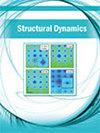"Everything's a sample": Characterizing everyday materials using x-ray powder diffraction.
IF 2.3
2区 物理与天体物理
Q3 CHEMISTRY, PHYSICAL
引用次数: 0
Abstract
We can learn something scientifically interesting about literally everything around us by examining it in a powder diffractometer. Comparing a macroscopic understanding of a material with the atomic-scale description proves to be a good way of generating excitement about our science among young people and the general public. I tell stories (case studies) about what can be learned by examining several classes of everyday materials: rocks (including slate and other flooring), water solids, rust and crud (including snow dirt), food (sugar, chocolate sandwich cookies, and peanut butter), medications (pain relief, decongestant, and pharmaceuticals), wood, and polymers.
“一切都是样品”:用x射线粉末衍射表征日常材料。
通过粉末衍射仪的检测,我们可以从我们周围的一切事物中学到一些有趣的科学知识。将对材料的宏观理解与原子尺度的描述进行比较,证明是在年轻人和公众中引起对我们的科学的兴奋的好方法。我讲的故事(案例研究)是关于通过检查几类日常材料可以学到的东西:岩石(包括石板和其他地板)、水固体、铁锈和污垢(包括雪土)、食物(糖、巧克力三明治饼干和花生酱)、药物(止痛药、减充血剂和药物)、木材和聚合物。
本文章由计算机程序翻译,如有差异,请以英文原文为准。
求助全文
约1分钟内获得全文
求助全文
来源期刊

Structural Dynamics-Us
CHEMISTRY, PHYSICALPHYSICS, ATOMIC, MOLECU-PHYSICS, ATOMIC, MOLECULAR & CHEMICAL
CiteScore
5.50
自引率
3.60%
发文量
24
审稿时长
16 weeks
期刊介绍:
Structural Dynamics focuses on the recent developments in experimental and theoretical methods and techniques that allow a visualization of the electronic and geometric structural changes in real time of chemical, biological, and condensed-matter systems. The community of scientists and engineers working on structural dynamics in such diverse systems often use similar instrumentation and methods.
The journal welcomes articles dealing with fundamental problems of electronic and structural dynamics that are tackled by new methods, such as:
Time-resolved X-ray and electron diffraction and scattering,
Coherent diffractive imaging,
Time-resolved X-ray spectroscopies (absorption, emission, resonant inelastic scattering, etc.),
Time-resolved electron energy loss spectroscopy (EELS) and electron microscopy,
Time-resolved photoelectron spectroscopies (UPS, XPS, ARPES, etc.),
Multidimensional spectroscopies in the infrared, the visible and the ultraviolet,
Nonlinear spectroscopies in the VUV, the soft and the hard X-ray domains,
Theory and computational methods and algorithms for the analysis and description of structuraldynamics and their associated experimental signals.
These new methods are enabled by new instrumentation, such as:
X-ray free electron lasers, which provide flux, coherence, and time resolution,
New sources of ultrashort electron pulses,
New sources of ultrashort vacuum ultraviolet (VUV) to hard X-ray pulses, such as high-harmonic generation (HHG) sources or plasma-based sources,
New sources of ultrashort infrared and terahertz (THz) radiation,
New detectors for X-rays and electrons,
New sample handling and delivery schemes,
New computational capabilities.
 求助内容:
求助内容: 应助结果提醒方式:
应助结果提醒方式:


